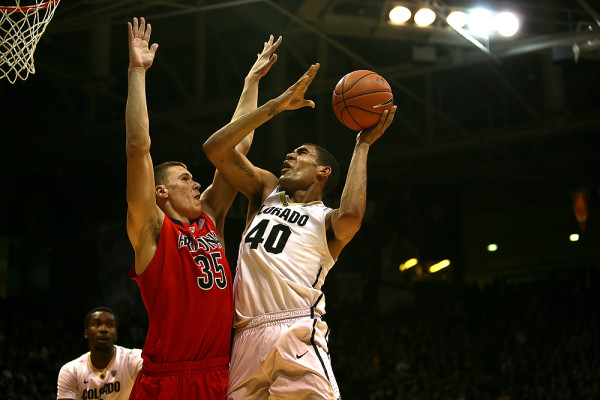Marching to Vegas: The Year Of The Bigs
Posted by Adam Butler (@pachoopsab) on January 22nd, 2016The following is far from scientific but interesting nonetheless. It became an exercise in qualification as opposed to quantification, visualizing the results of the experiment rather than discovering specific measures of validity. The question at hand wasn’t so much a question as it was a feeling, a healthy topic of conversation: sure seems there’s a lot of really good Pac-12 bigs this year. Feels a lot like that exhaustive list of great guards we had in 2014. Do you remember two years ago? That was the year Nick Johnson won the conference’s player of the year award while Joe Young and Jason Calliste lit things up from Eugene, Jahii Carson single-handedly changed how Herb Sendek coached, UCLA featured Jordan Adams and Kyle Anderson and neither was the highest drafted Bruin guard, CJ Wilcox became a first rounder, and we were introduced to a young man named Delon Wright. Guard play, in the 2014 Pac-12 season, was phenomenal. And this year it seems, in a league long and spread on talent, that skill has centralized in the front court. Don’t get me wrong, there are some great guards, but that 2014 list (wildly incomplete above) seems to have given way to a big heavy (not redundant) 2016. Here’s that unscientific list:
I told you it wasn’t scientific. And I’m not going to measure the number of primary guards (greens) versus bigs (red) in this list of top offensive efficiencies in the Pac-12. There are also so many different ways to qualify “good.” But isn’t this kinda interesting, right? The conference is front court top heavy right now. We aren’t cementing anything, because this is but one “available” measure. Jakob Poeltl might be the best Pac big since Kevin Love.
And it’s more interesting because we’re living in a day and age when the skill of the big man has seemingly been lost. Particularly when you consider the more condensed defenses of the college game, back-to-the-back skills aren’t always reinforced. Isolation isn’t readily available. So why might we be seeing such frontcourt force? There are a number of potential factors. First of all, our 2016 points of emphasis for officials include the area by which to work freely under the basket. That’s a direct change to the space in which these men work. Furthermore, the officials are mandating defenders’ hands stay off these guys when they’re receiving the ball deep. The arm bar won’t fly. This reinforces, for the bigs, freedom of movement, the overarching theme of these emphases. Broadly, we’re seeing the lowest percentage of three-pointers taken in the conference in 10 years. The ball is moving towards the basket and the tall guys are benefiting. When scouring the list, you’ll also notice a number of these guys are seasoned. The bigs are older, been through the ringer and had a few years of coaching. They’re good and probably know it.
And really who knows if this is the trend of our game. All those upperclassmen are soon to be gone. The nature of this game – turnover – lends itself to different styles annually. This year, we have a glorious crop of big and skilled players. I’m not entirely sure it will translate to NBA draft picks. Beyond Poeltl, there’s likely not a first rounder amongst them. But I don’t like to make that the hard-and-fast rule of quality, particularly this season and particularly with bigs, even if you can’t teach size. We started this discussion – and this is indubitably a discussion – by noting its lack of scientific effort. We now have a list, a lotta bigs and a few guards, and an appreciation (I hope) for the 2016 Pac-12 big man. And yet this article has no mention of: Tony Parker, Nicola Jovanovic, Chimezie Metu, Kaleb Tarczewski, Dusan Ristic, Eric Jacobsen, Savon Goodman, Chris Reyes, Rosco Allen, Michael Humphries, Chris Boucher, Jordan Bell, Reid Travis, Dillon Brooks…












































